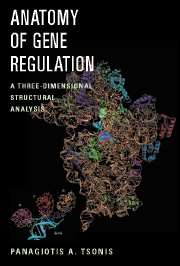Book contents
- Frontmatter
- Contents
- Preface
- 1 A General Introduction to 3-D Structures
- 2 The Higher Organization of the Genome
- 3 Structure of DNA and Telomeres
- 4 DNA Replication
- 5 Transcription in Prokaryotes
- 6 Transcription in Eukaryotes
- 7 Splicing
- 8 Modifications of mRNA
- 9 Compartmentalization of Transcription
- 10 Protein Synthesis
- 11 The Birth and Death of Proteins
- Further Reading and References
- Index
11 - The Birth and Death of Proteins
Published online by Cambridge University Press: 24 May 2010
- Frontmatter
- Contents
- Preface
- 1 A General Introduction to 3-D Structures
- 2 The Higher Organization of the Genome
- 3 Structure of DNA and Telomeres
- 4 DNA Replication
- 5 Transcription in Prokaryotes
- 6 Transcription in Eukaryotes
- 7 Splicing
- 8 Modifications of mRNA
- 9 Compartmentalization of Transcription
- 10 Protein Synthesis
- 11 The Birth and Death of Proteins
- Further Reading and References
- Index
Summary
PRIMER As the polypeptide is born and exits from the ribosome, it is bound by factors that will enable it to pass through the membranes of the endoplasmic reticulum. This is possible because all secreted proteins contain a signal in the very N-terminus, the signal peptide. This is recognized by the signal recognition particle that brings it to the receptor in the membrane and facilitates the passing. Then, the polypetide has to fold into its unique 3-D structure. We already know how important this is. The function of a protein depends on its 3-D structure. The folding must be correct; otherwise, the protein will not be allowed to perform its tasks. Folding involves many factors, called chaperones. The 3-D structures of chaperones also provide stunning images of the mechanism of folding. Alas, nothing lives forever! And this rule applies to proteins as well. In fact, it is central to regulation that the protein will die after some time. If a protein does not die, it will accumulate and induce diseases. Eventually, aged proteins will be recognized and brought to their demise with the help of particular proteins and structures. These processes are examined and compared in prokaryotes and eukaryotes. It will be the end of the protein, the end of our journey, and the end of the book.
The synthesis of the polypetide is not the end of the story. The protein is not ready for work yet. Several modifications must take place.
- Type
- Chapter
- Information
- Anatomy of Gene RegulationA Three-dimensional Structural Analysis, pp. 241 - 258Publisher: Cambridge University PressPrint publication year: 2003



